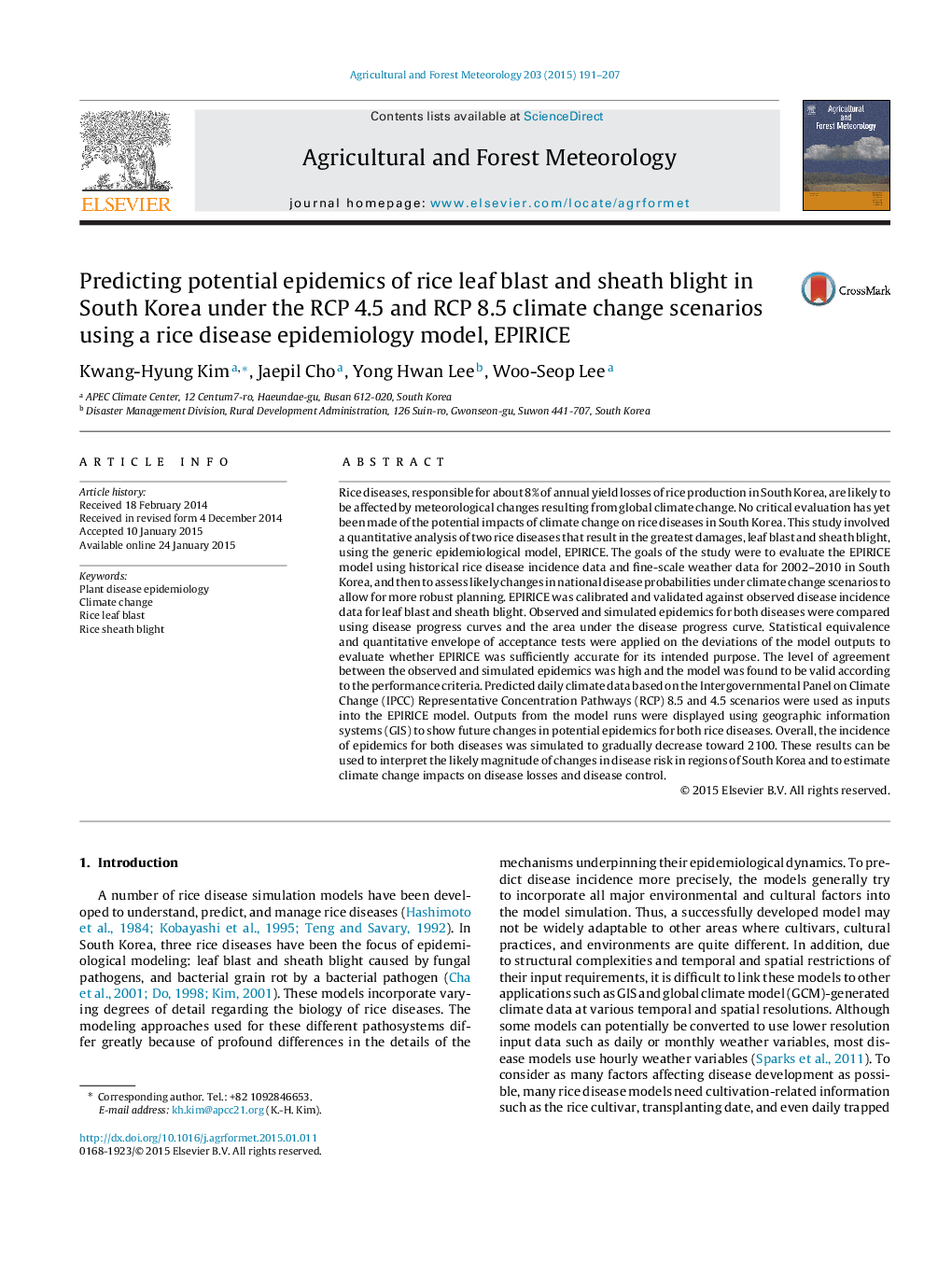| Article ID | Journal | Published Year | Pages | File Type |
|---|---|---|---|---|
| 6537374 | Agricultural and Forest Meteorology | 2015 | 17 Pages |
Abstract
Rice diseases, responsible for about 8% of annual yield losses of rice production in South Korea, are likely to be affected by meteorological changes resulting from global climate change. No critical evaluation has yet been made of the potential impacts of climate change on rice diseases in South Korea. This study involved a quantitative analysis of two rice diseases that result in the greatest damages, leaf blast and sheath blight, using the generic epidemiological model, EPIRICE. The goals of the study were to evaluate the EPIRICE model using historical rice disease incidence data and fine-scale weather data for 2002-2010 in South Korea, and then to assess likely changes in national disease probabilities under climate change scenarios to allow for more robust planning. EPIRICE was calibrated and validated against observed disease incidence data for leaf blast and sheath blight. Observed and simulated epidemics for both diseases were compared using disease progress curves and the area under the disease progress curve. Statistical equivalence and quantitative envelope of acceptance tests were applied on the deviations of the model outputs to evaluate whether EPIRICE was sufficiently accurate for its intended purpose. The level of agreement between the observed and simulated epidemics was high and the model was found to be valid according to the performance criteria. Predicted daily climate data based on the Intergovernmental Panel on Climate Change (IPCC) Representative Concentration Pathways (RCP) 8.5 and 4.5 scenarios were used as inputs into the EPIRICE model. Outputs from the model runs were displayed using geographic information systems (GIS) to show future changes in potential epidemics for both rice diseases. Overall, the incidence of epidemics for both diseases was simulated to gradually decrease toward 2100. These results can be used to interpret the likely magnitude of changes in disease risk in regions of South Korea and to estimate climate change impacts on disease losses and disease control.
Keywords
Related Topics
Physical Sciences and Engineering
Earth and Planetary Sciences
Atmospheric Science
Authors
Kwang-Hyung Kim, Jaepil Cho, Yong Hwan Lee, Woo-Seop Lee,
